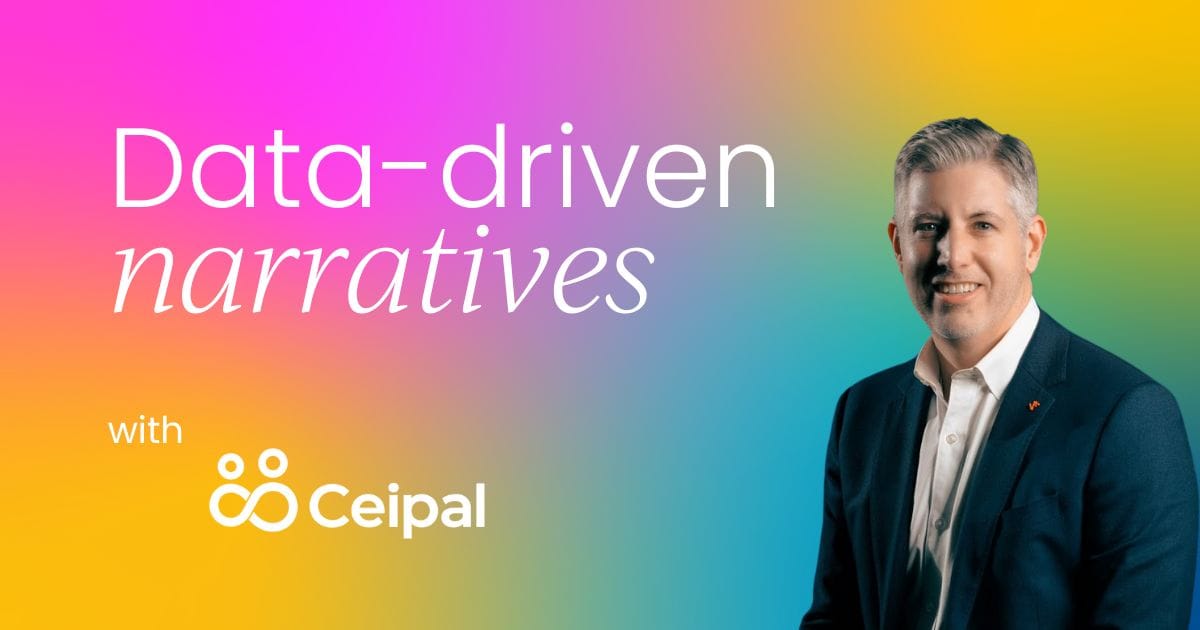As companies shift focus from acquisition to long-term retention, the growth stage of the customer journey is where marketing can make its biggest impact, and where data becomes absolutely essential.
At BigCommerce, we’ve found that understanding your customers through data isn’t just useful, it’s the key to driving deeper engagement, smarter upsell and cross-sell strategies, and ultimately, better business outcomes.

Why data matters in the growth stage
Data is incredibly powerful when it comes to serving your customers in ways that make sense for the business.
I’m a huge data nerd, I spend a lot of my time analyzing it, drawing insights, and using it to shape our strategies. Data helps you scale your programs, shorten the time to value, and get to success faster.
At BigCommerce, we have a "test and learn, fail fast" culture, which means we're always experimenting, whether it’s testing messaging, audience cohorts, or tactics. I love that, because it keeps us agile and focused on what actually works.
That’s a big reason I love talking data. It's not that other companies aren’t paying attention to it, but I believe data should truly sit at the core of any customer marketing function.
Data can tell so many different stories. With the rise of AI, automation, and other tools, the ways we can use data are expanding fast. I’m a huge proponent of using it in any way possible to drive programs forward and make a measurable impact on the business.
When I think about the customer journey from a B2B perspective, I like to keep the stages simple: onboarding, growth, retention, and renewal/advocacy.
- Onboarding is about helping new customers get started and find value quickly.
- Growth is where customers are already successful and using your product – now it’s time to expand that value through new features, upsell, or cross-sell opportunities.
- Retention is about keeping them happy, informed, and continually engaged through best practices and enablement.
- Renewal and advocacy are where you turn loyal users into champions who share their success with others.
Most customer marketing resources tend to focus on advocacy (case studies, community building, and so on), which is all important. But there’s so much that comes before that. If we want customers to become champions, we have to support them through every stage that leads up to it.
Personally, I’m especially passionate about retention marketing. The data can tell you who’s at risk of churning, and when you have that insight, you can proactively communicate with those customers and work to keep them engaged.
But during the growth phase, the focus is on enabling, empowering, and supporting customers as they deepen their use of your product, and data is the key to doing that well.
The five types of customer data to prioritize for growth
If I had to choose just five types of data to inform growth programs, these would be my go-to:
- General account details
This includes things like tenure, company size, industry, product plan, and the personas we have relationships with. All of that helps build out more meaningful cohorts.
When you know the broader context of an account, you can shape programs that are hyper-relevant. For example, I love building vertical-specific programs. If we’re targeting fashion brands, we can tailor everything (messaging, assets, examples) to fit that industry. Knowing your customers on this level makes your marketing smarter and more impactful.
- Account health
Using a health score matrix to determine whether a customer is healthy or at risk of churn is critical. It allows you to prioritize which accounts need attention and which are primed for growth. I could talk about health scores for hours, they’re that important. They’re not just for customer success. Customer marketing can (and should) use them to inform campaigns and interventions.
- Product usage
This one’s huge. If you know what features your customers are actively using, you can tailor your enablement accordingly. Launching a campaign about a new feature? Exclude users who’ve already adopted it. That way, you're only sending content to the people who will benefit from it. It all comes back to relevance and personalization.
- NPS and referenceable status
This is one of my favorites. Understanding how customers feel about your brand, whether they’d recommend you or not, is valuable for more than just your advocacy program. It adds another layer to your picture of account health.
You might already include NPS in your health score, and that’s fine, but it’s useful to analyze independently, too. I’ve seen plenty of high-performing accounts that have neutral NPS scores but are still great advocacy candidates.
- Personas
If you know the types of users within an account, you can tailor your content more effectively. At BigCommerce, we think about technical vs. business personas.
A technical persona wants documentation, how-tos, and in-depth feature breakdowns. A business persona wants results: “How does this improve my ROI, revenue, or efficiency?” When you understand the "who," your messaging hits harder.
All five of these data points together help you create more sophisticated, accurate cohorts. You avoid the trap of segmenting based on just one or two attributes, which can lead to generic messaging. If you really want to drive engagement during the growth stage, personalization is non-negotiable.
One additional type of data I’ll call out, even though we’re focused on customer-specific data today, is success metrics. It’s important to track what’s working. Are you A/B testing your calls to action? Measuring campaign performance? That kind of data helps you iterate and improve. It’s just as essential for scaling customer growth programs effectively.

How to assess and apply these data points
Let’s talk about how to actually assess the data you collect, especially when it comes to health scores and personas.
Health scores are entirely dependent on your business goals and the data you have access to. There's no one-size-fits-all approach. A good health score is made up of key success metrics or KPIs that help indicate whether a customer is thriving, at risk, or somewhere in between. NPS can be part of it, but it’s important to think beyond that.
For example, at one of my previous companies, our health score was primarily based on product usage and overall sentiment. Product usage was our leading indicator of both churn and retention.
If someone wasn’t engaging with key features, we could use that signal to trigger campaigns or enablement to bring them back on track. That’s the kind of proactive marketing that customer marketing should be doing more of.
In another scenario, we built health scores around business-level KPIs. One question we asked was: Does this customer consider us a long-term strategic partner? That may seem intangible, but it’s incredibly telling. If a customer sees you as part of their broader ecosystem, they’re far more likely to renew and grow with you. That level of insight is powerful.
So, how do we capture those more qualitative inputs? For things like sentiment and long-term partnership potential, we rely on conversations between our Customer Success Managers (CSMs) and the customer.
Our CSMs are trained to log those insights in our system, which feeds into the health score algorithm. In our case, about three out of ten KPIs in our health score are manually updated based on those trusted relationships. The rest are pulled automatically from product and engagement data.
The point is, your health score should be a living, breathing reflection of what matters most to your business and your customers. It should blend hard metrics with soft insights to give you a full picture. And once you have that, you can act on it – personalize your outreach, prioritize accounts, and build campaigns that meet customers where they are.
Using data to drive meaningful growth
When I’m thinking about how to use data during the growth stage, I always start with the business goal.
Let’s say the objective is to upsell services. The first step is to use data to build a cohort of customers who are the best fit for that offer – those who need the service, are ready for it, and haven’t recently purchased it.
For example, if someone just bought services three months ago, they don’t need to hear from us again about the same thing. Blasting every customer with upsell messaging isn’t just ineffective – it can actively work against you.
Data helps you narrow your audience, make the message relevant, and improve the chances of engagement. Relevance and personalization aren’t just buzzwords, they’re what move the needle on actual program performance.
This kind of segmentation doesn’t just improve efficiency, it enhances the quality of the customer experience. You can scale your efforts without sacrificing the personalized feel that customers value. That’s how customer marketing supports growth in a scalable way.
It also supports cross-functional alignment. CSMs are often focused on one-to-one interactions, especially in high-touch environments. Customer marketing, on the other hand, can help scale lifecycle strategies one-to-many, or even many-to-many. The better we are at using data to do that, the more helpful we become to CS teams – and the more buy-in we get for our programs.
One point that often gets overlooked is that data doesn’t just tell you who to target – it also tells you who not to target. In a previous role, we had a rule in place: if an account was flagged as high churn risk, they were automatically excluded from upsell and cross-sell campaigns.
Instead, our focus would shift to retention and support. These customers weren’t in the right headspace to expand, they needed reassurance and value delivery first.
That’s a critical part of managing the growth stage well. If a customer isn’t realizing value from your product, it doesn’t matter how great your upsell offer is. You might even do damage by pushing too hard, too soon.
That’s why growth isn’t just about new features or sales – it’s about enabling customers to realize the value they already have. Only then are they ready to expand. Get that right, and they’re not just open to growth: they’re eager for it.

Collaborating cross-functionally to make data actionable
While CS is absolutely one of my key partners, it’s just one part of a broader coalition I try to build at every company I’ve worked in. There are typically three to four teams I align with closely to solve customer-facing business problems in a strategic and scalable way.
CS is at the core, they’re the team with the strongest direct relationships with customers. They’re often the first to hear feedback and the first to notice early signs of risk or opportunity.
But then I layer in two other essential groups: the product team and the product marketing team. When these three teams – customer success, product, and customer marketing – work together, we form a really powerful task force.
Product teams help guide everything from roadmap planning to persona development. Product marketing adds strategic messaging, positioning, and often brings valuable competitive analysis to the table.
All of this informs how we approach our customer marketing programs – everything from content development to feature launches and adoption campaigns.
The final piece of that coalition is the data and analytics team. They’re critical to helping us slice, segment, and prioritize based on real insights. Whether it's validating hypotheses, identifying trends, or measuring impact, data teams make everything more actionable.
Bringing these teams together creates more than alignment; it builds consistency. We’re able to test new product experiences, align campaign timing, and speak with one unified voice across all customer touchpoints. That’s what prevents a fragmented experience where one team is saying one thing and another is saying something completely different.
And for anyone in customer marketing: if you’re not already looped into what these teams are working on, make the effort. Even being a fly on the wall in their meetings will help you identify opportunities to support and collaborate.
Another thing I’ve learned is that one of the best ways to deepen these relationships is by offering help. Don’t wait for teams to come to you, come to them with ideas and support.
If product marketing needs help getting customers onto a call for messaging validation or competitive analysis, you can help. If product is looking for early adopters for a beta test, you can surface the right champions.
I always suggest identifying a few ways you can add value, then ask the team to rank how well they think they’re doing in each area. Use that as a guide to tailor how you support them. That kind of proactive collaboration has been one of the biggest accelerators in my own career.
It doesn’t just elevate the work we’re doing, it positions customer marketing as a strategic, cross-functional partner that everyone wants to work with.
Where automation, AI, and real-life examples come into play
AI is evolving fast, and while I wouldn’t call myself an expert in it yet, I’m a big believer in automation, especially for customer marketers with large customer bases.
Scaling your efforts is critical for long-term success, and automation allows you to do that without sacrificing quality.
At previous companies, I’ve used platforms like Gainsight to great effect. Gainsight pulled in customer data from multiple sources, ran it through a health score algorithm we designed, and automatically triggered programs based on specific criteria.
Yes, the upfront work of building these programs was time-intensive, but once they were live, they were evergreen. That gave our team the time and bandwidth to focus on optimizing, iterating, and finding new ways to support customers and the business.
Automation doesn’t just drive scale, it enables impact. Especially if you’re a team of one (or feel like one), making your time efficient and effective is everything. Tools that analyze data, summarize calls, or automatically surface customer insights can help you stay connected and focused, even with limited resources.
Two ways data has directly driven growth and retention
I’ll wrap up by sharing two real-world examples that show how we’ve used data to power meaningful results:
1. Driving feature adoption with product usage thresholds
At one company, our health score was built around product usage. We identified a key sticky feature that had a big impact on customer retention.
When customers dropped below the threshold for using that feature, our system triggered an automated enablement campaign – a multi-channel nurture with training, support, and even some fun swag.
The result? A 35% increase in usage of that feature in a short timeframe. We knew this usage was tied closely to retention, so this was a huge win. It was also one of the first moments I really saw how customer marketing could go beyond advocacy and play a critical role in product adoption and long-term growth.
2. Mitigating churn by identifying upgrade opportunities
In another instance, we noticed that customers on lower-tier plans were significantly more likely to churn. Once we identified that cohort through data analysis, we launched a targeted upgrade campaign.
It focused on the benefits of moving to a higher tier, walked them through how to upgrade, and added some fun incentives. We even positioned it as an exclusive opportunity, like a secret club. That personalization and positioning worked. We saw strong upgrade rates, and more importantly, we were able to retain a segment that was previously high-risk.
Both of these programs succeeded because we had access to the right data, used it to identify patterns and cohorts, and acted quickly with relevant, personalized messaging.
That’s the magic of customer marketing when it’s driven by data, you're not just reacting; you’re strategically shaping the customer journey.
This article was based on Cetiera's appearance on the Customer Marketing Catch-up podcast.


 12 min read
12 min read
 Follow us on LinkedIn
Follow us on LinkedIn






